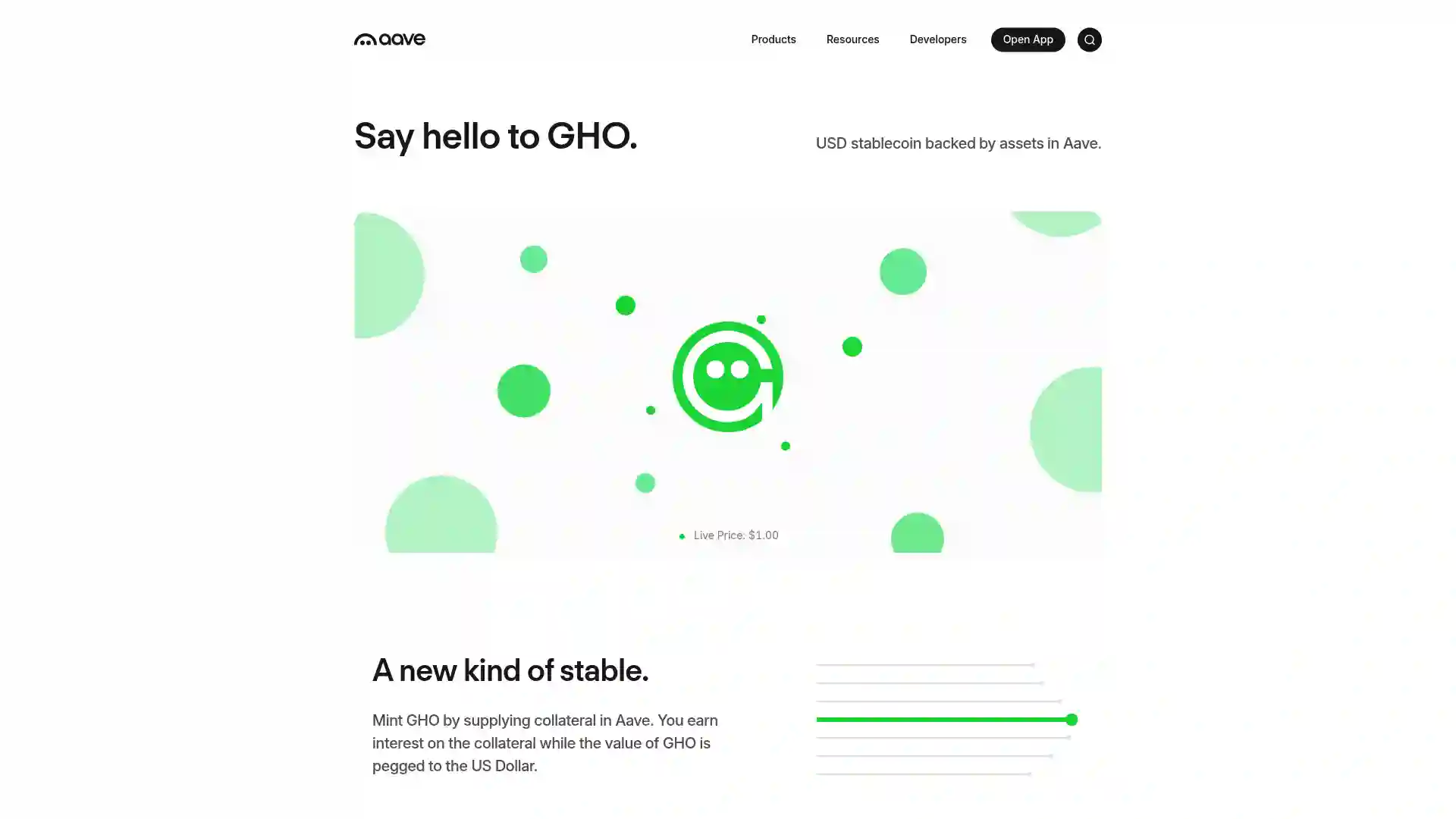GHO (GHO)
GHO is a decentralized, overcollateralized stablecoin native to the Aave Protocol. It is designed to maintain its value through market mechanisms, providing stability within the decentralized finance (DeFi) ecosystem.
Overview
GHO operates within the Aave Protocol. Unlike other assets, it is minted and burned by smart contracts during borrowing and repayment. This helps maintain price stability, with the GHO oracle price fixed at one U.S. dollar, independent of market fluctuations. This fixed price aids in ensuring the stablecoin's value remains consistent. Instead of being supplied by users, GHO is created by the protocol as needed, offering more flexibility than traditional assets that require user participation before lending.
GHO on Arbitrum Layer 2

| Ticker | GHO |
| Category | Stablecoins |
| Website | https://gho.xyz/ |
| @GHOAave | |
| Telegram | Aavesome |
| Contract Addresses | |
|---|---|
| ethereum | 0x40...2f Copied! Copied! |
| arbitrum-one | 0x7d...33 Copied! Copied! |
On July 2, 2024, GHO was deployed to Arbitrum, a Layer 2 scaling solution designed to improve the throughput of Ethereum transactions and reduce associated costs. Arbitrum processes transactions off the Ethereum mainnet while still leveraging Ethereum's security features. This setup enhances the scalability and efficiency of GHO transactions by offering reduced gas fees and faster processing times.
Integrations
GHO is integrated into the Aave V3 Ethereum pool, leveraging its risk mitigation features such as e-mode, isolation mode, and supply caps. These features help manage the risks associated with borrowing and lending within the protocol. A key element in the integration of GHO is the role of facilitators. Approved by Aave Governance, facilitators have the ability to mint and burn GHO tokens. They can apply various strategies to their generation of GHO, providing flexibility and utility to the stablecoin.
Integration with Chainlink
GHO utilizes Chainlink’s decentralized oracle network to provide accurate and up-to-date price data. Chainlink offers a system of oracles that aggregate data from multiple sources to supply the GHO smart contracts with reliable pricing information. The integration with Chainlink supports GHO’s functionality by ensuring that market prices used for calculating collateral and loan-to-value ratios are current and accurate. This helps maintain the stability of GHO’s value and contributes to the stability of the stablecoin within the decentralized finance (DeFi) ecosystem.
Tokenomics
GHO is an overcollateralized stablecoin, meaning each GHO token is backed by more than one dollar of collateral. This model ensures the stability of GHO within the DeFi ecosystem. The collateral backing GHO includes a variety of assets available in the Aave Protocol, providing a diversified foundation. Interest rates for borrowing GHO are determined by Aave Governance and can be periodically adjusted to maintain stability. The interest accrued on GHO debt is redirected to the Aave DAO, contributing to the DAO treasury and not to asset suppliers.
Stability mechanisms
Several mechanisms are in place to ensure the stability of GHO. The fixed oracle price, governance-set interest rates, and the overcollateralization model all contribute to maintaining the value of GHO. Additionally, a discount model incentivizes users to stake AAVE tokens in the Safety Module, offering borrowing rate discounts. This encourages participation and supports the overall stability of the stablecoin.
Risk management
The Aave DAO is responsible for managing the collateral assets listed in the Aave pool and their configuration. The protocol employs risk management strategies and market simulation data to inform its decisions. GHO benefits from key risk mitigation properties inherent in the Aave pool, including collateral requirements and a liquidation process. These measures protect the protocol and its users from potential market volatility.
Smart contract security
The smart contracts associated with GHO have undergone thorough internal and external reviews, formal verification by auditors, and scrutiny from the community. An active bug bounty program is in place to ensure ongoing vigilance against potential vulnerabilities. These efforts maintain the security standards and protect the integrity of the stablecoin.
